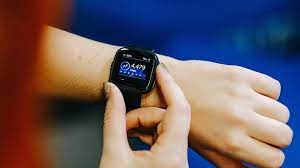Urine infections can have serious long-term health consequences, so finding a reliable way to diagnose and treat them is essential. Wearable technology has the potential to play a major role in this field, but how does it work? In this article, we’ll explore how wearables can be used to detect and respond to urinary tract infections (UTIs) as well as what impact they could have on the future of urine infection detection.
What Are Urinary Tract Infections?
Urinary tract infections are relatively common bacterial infections that affect any part of the reproductive system. Generally caused by Escherichia coli (commonly known as E. coli), they can range from mild to severe in terms of symptoms and severity. Some people suffer with chronic cases that last for months or years without proper treatment, making timely diagnosis and effective treatment essential for good outcomes.
How Can Wearable Technology Help?
Wearable technology is increasingly being embraced as a powerful tool for tracking health conditions such as UTIs. By monitoring changes in body temperature or other physical markers like pulse rate or respiration rate, these devices can detect an infection at its earliest stages before symptoms become obvious – greatly increasing the chances of successful treatment. Wearable technology also has the potential to warn users when their levels exceed certain thresholds – offering an extra layer of protection from developing further complications.
What Kinds Of Devices Are Available?
There are a number of wearable devices on offer which promise practical help with detecting UTIs in its early stages:
• Fitbits – popular fitness trackers equipped with sensors which can detect changes in temperature, heart rate and respiration rate; all signs of a possible infection
• Smartphone apps – many apps offer similar facilities as the most comprehensive fitness trackers yet they may not be as comprehensive, accurately detecting slight rises in temperature before other physical markers
• Underwear items – some developers have gone so far as to create underwear with built-in sensors which can detect even tiny shifts in body temperature over time indicative of an infection beginning
• Temperature meters – new models are coming on the market every day promising precise readings which can be tracked over time
• Urine testers – some medical labs already offer “dipstick tests” which measure multiple aspects contained within urine to give an accurate indication if there may be an infection present
However it should be noted that these current methods aren’t infallible and should only ever serve as backup tools for spotting an issue rather than relying upon them completely (self-treatment should never occur). There’s still much more research needed into these devices before suggesting them as being suitable for everyday use – physician oversight is absolutely necessary when dealing with UTI detection. How Will Future Wearables Improve Diagnostics? H2As developers perfect their designs every year, expect future generations of wearables to become even more sophisticated at providing early warnings about urinary tract health issues:
• Smart clothing enabling effective disinfection cycles
• Pulse monitors able better differentiate between healthy readings and those concerning deterioration
• Closed loop systems warning both doctor and patient simultaneously etc
Conclusion
Wearable technology promises reliable urine infection detection methods faster than ever before – potentially revolutionizing the way UTIs are treated going forward. Clinicians must however remember that ultimately no device provides infallible data – trusted professional advice should always take precedence when determining diagnoses or treatments moving forward.
Frequently Asked Questions (FAQs)
Q1 . What Is A Urinary Tract Infection ?A1 . Urinary tract infections are relatively common bacterial infections that affect any part of the reproductive system typically caused by E.coli bacteria.
Q2 . How Do Wearable Devices Help ?A2 . These devices help by monitoring changes in body temperature or other physical markers like pulse rate or respiration rate, thus making it easier to detect an impending urinary infection earlier on rather than when symptoms manifest themselves later on.
Q3 . What Kinds Of Devices Are Available For Use ? A3 . Popular fitness trackers equipped with sensors, smartphone apps offering similar facilities , underwear items designed specifically for this purpose ,temperature meters & urine testers are available for those wanting accurate information about their urinary health quickly & easily.
Q4 . How Will Future Wearables Improve Diagnostics ?A4 . Look out for smart clothing enabling disinfection cycles ,pulse monitors helping differentiate between healthy readings & deteriorating ones & closed loop systems warning both patient & doctor.
Q5 . What Should We Remember About Reliance On Device Data ? A5 . Although these devices provide invaluable data about our bodily functions self-treatment without consultation from a qualified physician should always be avoided
I hope you like reading on Wearable Tech: The Future of Urine Infection Detection?.





